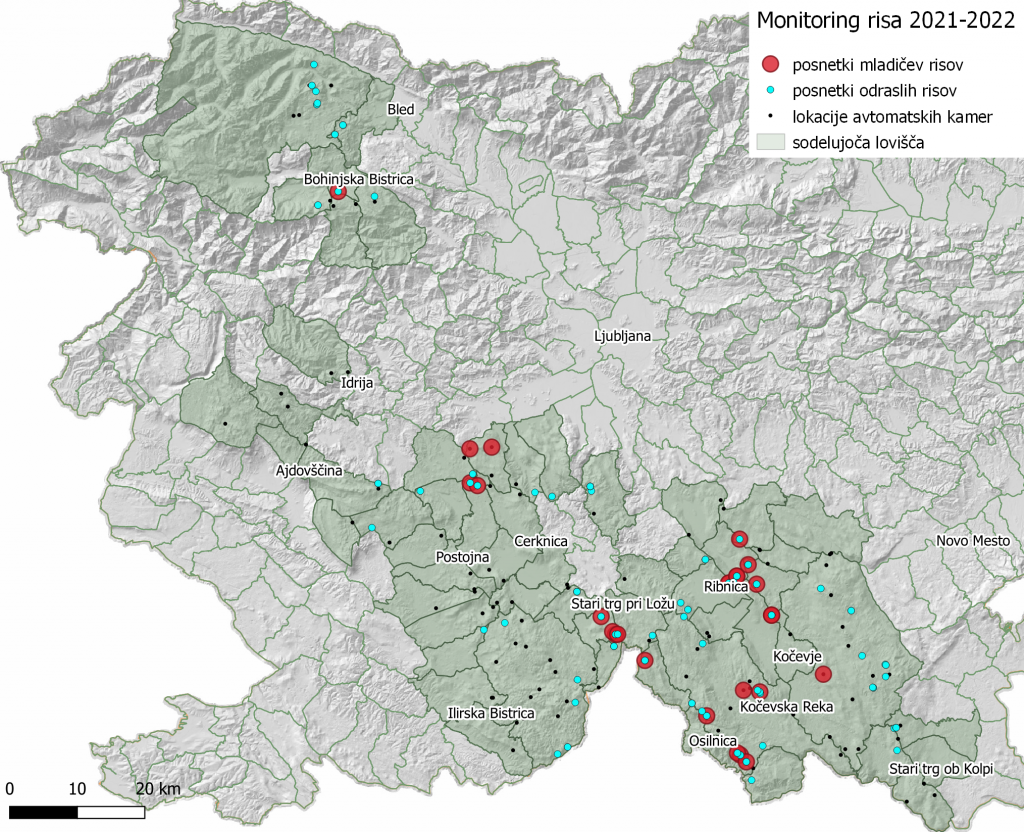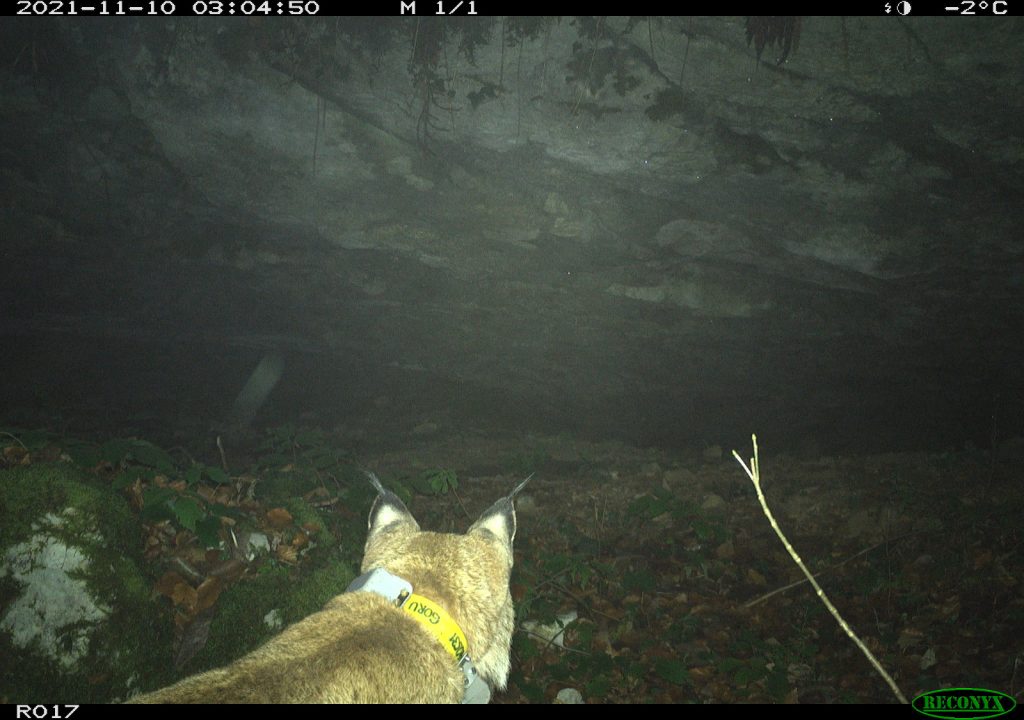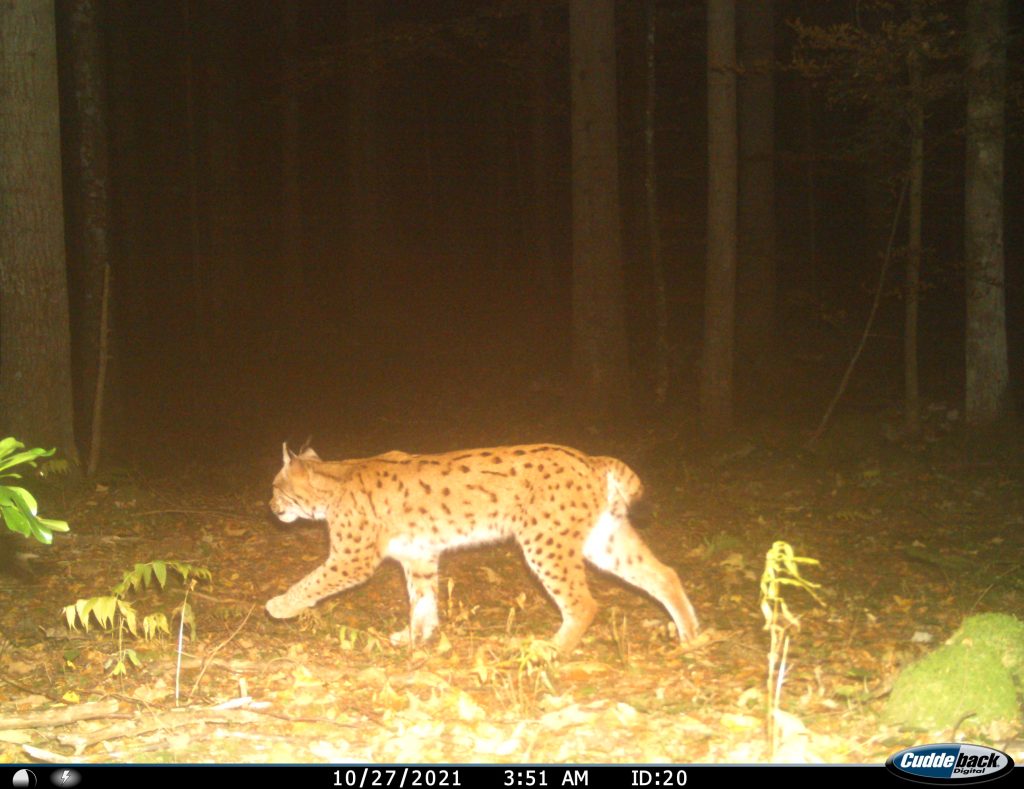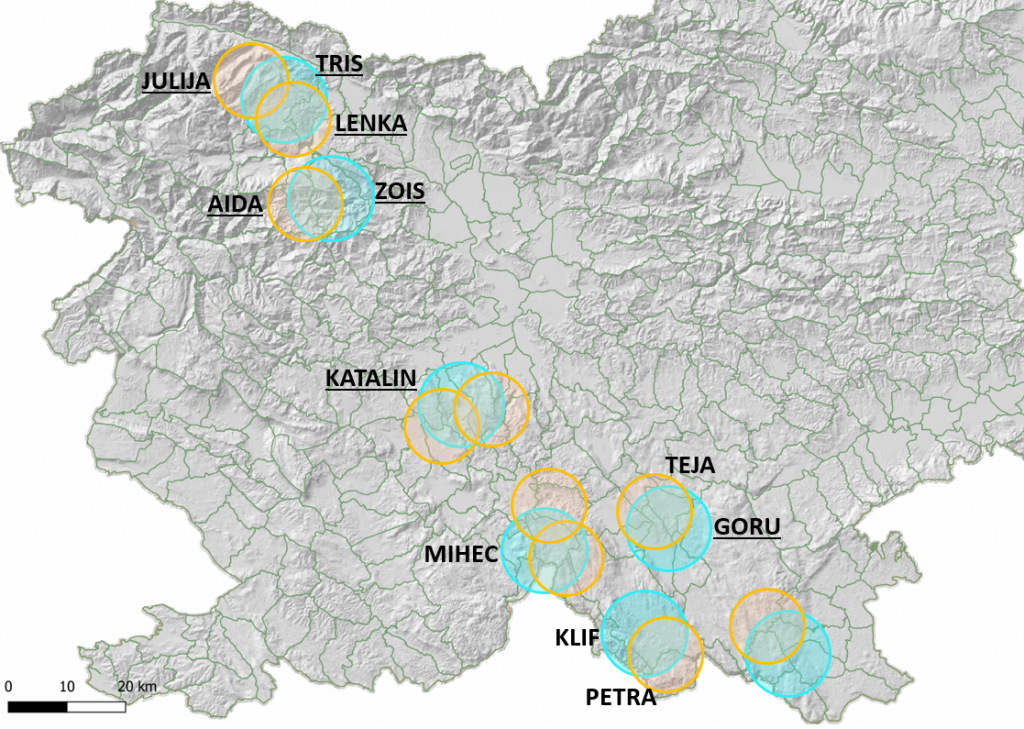The camera trapping survey in Slovenia between 2021 and 2022 was a record year in terms of the area covered and the amount of data collected. The survey extended from Dinarics to the Alpine area, involving 57 hunting grounds in camera trapping. 318 lynx events were detected at 71 out of 173 locations in total, which is 100 more detections than one season earlier. A minimum of 30 adult animals were identified from the photos. This population growth is mostly due to the new stepping-stone established by five translocated animals in the Alps. Out of 30 adult lynx, five females were recorded with a total of 15 kittens, which is a record number of kittens so far.

Map of camera trapping locations (black dots) in the monitoring season 2021-2022 with locations of recorded adult lynxes (blue dots) and kittens (red dots). Map: Urša Fležar, LIFE Lynx

This year Goru was the most photographed lynx, with 49 events. Some of the photos were very easy to identify. Photo: LIFE Lynx
Four years of monitoring enabled us to gain a good understanding of the lynx population in Slovenia, including identifying the areas with territorial lynx couples on one hand and follow the integration of the translocated lynx (Goru, Katalin) into the existing population via detecting their kittens on the other hand. Even in the Alps, we successfully detected the first generation of lynx offspring in Jelovica, and monitored all translocated adults regularly on camera traps. A detailed overview of the monitoring results from the 2021-2022 season will be available in the October issue of the Lovec magazine and in LIFE Lynx annual report for C.5 action.

Mihec, 11 years old lynx is still present on his territory, where also two females are present. Photo: LIFE Lynx

Areas with detected permanent lynx couples; lynx male (blue circle) and one to two females (yellow circle) with the names of territorial lynxes that are wearing telemetry collars. The names of translocated lynxes are underlined. Map: Urša Fležar, LIFE Lynx
